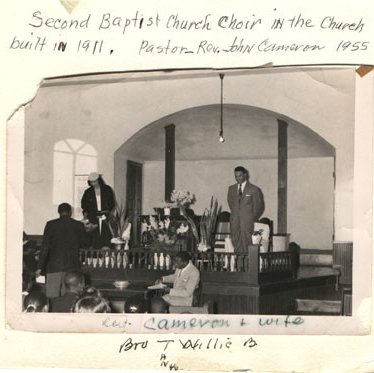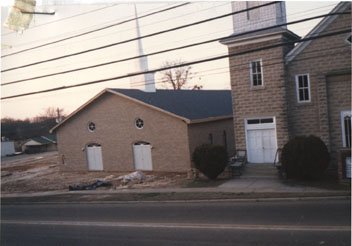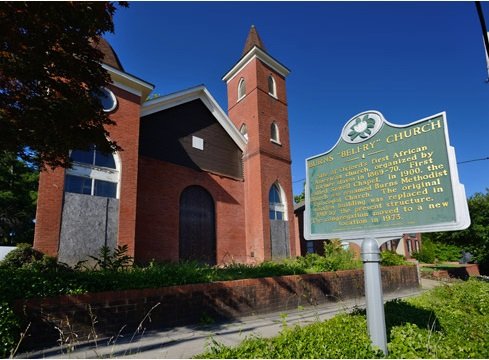Mississippians

- Second Baptist Church. Oxford, MS. Date and Photographer Unknown.
Part I: List of Historic African-American Churches in Lafayette County
Clear Creek Baptist
Toby Tubby Baptist
Jumpers Chapel CME
Cypress Grove Baptist
Union Hill Baptist
Providence United Methodist
East Saint Peter Baptist
West Spring Hill Baptist
St. Paul, CME
Flint Hill Baptist
Jefferson Baptist
Salem United Methodist
Greater Saint John Baptist
Way of Holiness Church of God
St. Peter's United Methodist
Harrisonville Baptist in Christ
Bethlehem CME
New Hope Baptist
Smith Methodist Episcopal
Galilee CME
North Hopewell Baptist
Beverly Chapel Church of God in Christ
Springfield Baptist
Buford Methodist Episcopal
Lighthouse Church of Christ
Third Baptist
Jesus Christ Congregational
True Bible Way
Church of Christ (Rivers Hill)
Tolby Primitive Baptist
Clear Springs Baptist
Rock Hill
Part II: History, Second Missionary Baptist Church

- Second Missionary Baptist Church
The Second Missionary Baptist Church was founded in 1869 by the Reverend Ned Johnson. Before this time Christian slaves often attended the churches of their masters. The nucleus of Second Baptist began with both Baptist and Methodist ex-slaves building a brush arbor at the lower edge of the 'Old Pegues Estate,' now known as Amma Delle Subdivision. A group of women transferred their membership from the white Baptist church to the new church: Jane Wilburn, Jane Dickens, Eliza Brown, Vinna Thompson, Matilda Ivy Sanders, Betty McCloud, Polly Avant, and Martha Butler. Henry Woods, a noted slave fiddler assisted this band of women and served as custodian.
In 1873, this group used the back of the First Baptist Church for Sunday evening services. In April of that same year, the group purchased the present day site for the sum of $50.00. Many contributions toward the construction of Second Baptist (Colored Baptist Church of Oxford) came from the white Baptist church members. Reverend Ned Johnson continued to serve as pastor.
Reverend H. W. Bowen from Macon became the first black teacher founding a school at the church. The first students included Callie Coleman Johnson, Mrs. Macon Taylor, and Jo Anna Isom.
Part III: History, Burns Methodist Church

- Burns Belfry Church. Photo by Robert Jordan.
Burns Methodist Church was organized in 1870. The original church was white frame with a light blue ceiling. In 1910, a new church was constructed on Depot Street (Jackson Avenue) through loans by members and donations of time to mix mortar and carry brick. The ladies brought dinner baskets to the working men.
The church had a bell in the belfry and a foot-pedal organ. Two larger pot-bellied stoves provided heat. The Ladies Aid cared for the brass kerosene lamps hanging from ceiling chains which provided light.
Church activities included box suppers, church plays, and 'feasts in the wilderness.' Boys carried girls to church in shiny buggies drawn by horses with fancy harnesses and a decorative buggy whip. At Sunday night services, customarily, the girl held the boy's hat in her lap.
In 1975, a new church was constructed on Mollie Barr Road and Washington Avenue. -- Author Unknown
Text from Historical Marker, 2000:
- Site of Oxford's first African American church, organized by former slaves in 1869-70. First called Sewell Chapel. In 1900, the church was renamed Burns Methodist Episcopal Church. The original wooden building was replaced in 1910 by the present structure. The congregation moved to a new location in 1973.
